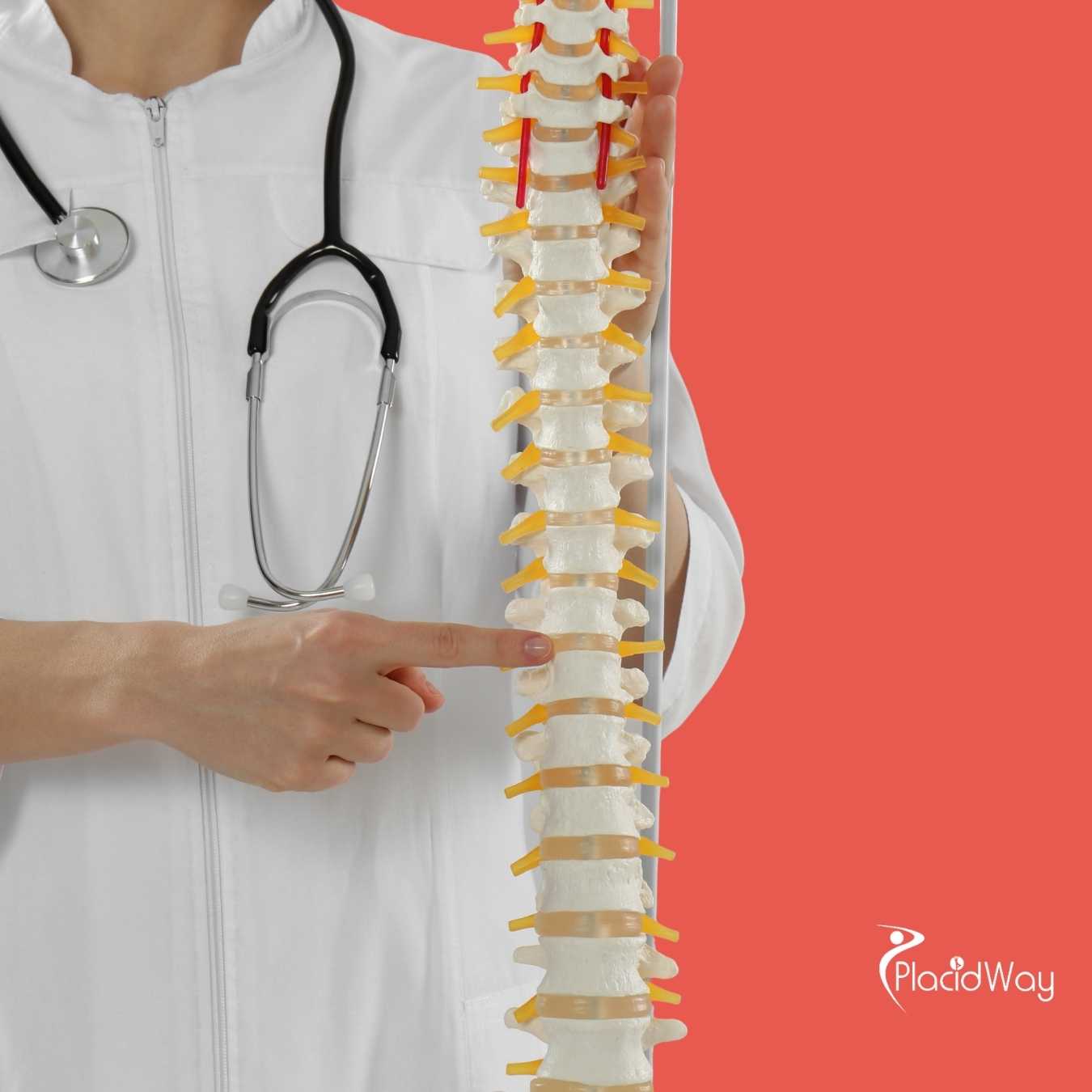Stem Cell Therapy for Knee Injuries: Healing Torn Meniscus
When you experience knee pain, especially after an injury, a torn meniscus is often the culprit. This C-shaped piece of cartilage acts as a shock absorber in your knee, and a tear can lead to significant discomfort, swelling, and limited movement. Traditionally, treatment options have ranged from rest and physical therapy to surgical repair or removal of the damaged meniscal tissue. However, a new frontier in medicine, regenerative medicine, is offering exciting possibilities, particularly with stem cell therapy.
Many are wondering if this innovative approach can truly mend a torn meniscus and get them back on their feet without invasive surgery. The idea of using the body's own healing mechanisms to repair injuries is incredibly appealing. Stem cell therapy for a torn meniscus involves injecting concentrated stem cells, often derived from your own bone marrow or fat tissue, directly into the injured area. These cells have the unique ability to differentiate into various cell types and secrete growth factors, which can stimulate tissue regeneration, reduce inflammation, and alleviate pain.
This blog post will dive deep into how stem cell therapy works for meniscus tears, its effectiveness, recovery expectations, and what you should consider if exploring this treatment, including aspects of medical tourism for such advanced procedures.
How does stem cell therapy work for a torn meniscus?
Detailed Explanation: The mechanism behind stem cell therapy is rooted in the remarkable properties of **mesenchymal stem cells** (MSCs), which are typically used for orthopedic applications like a torn meniscus. Once injected into the site of the injury, these powerful cells perform several crucial functions. Firstly, they have the ability to differentiate into various cell types, including cartilage cells (chondrocytes), which are essential for repairing the meniscus.
This means they can contribute directly to the structural integrity of the damaged tissue. Secondly, and equally important, MSCs act as powerful signaling cells. They release a variety of growth factors, cytokines, and other bioactive molecules that create an optimal healing environment. These factors work to:
- Reduce inflammation: By dampening the inflammatory response, stem cells help alleviate pain and swelling, which are common symptoms of a meniscus tear.
- Promote blood vessel growth (angiogenesis): Improved blood supply to the injured area can enhance nutrient delivery and waste removal, both vital for tissue repair, especially in areas of the meniscus with poor natural blood flow.
- Recruit other healing cells: Stem cells can attract the body's native healing cells to the injury site, amplifying the regenerative process.
This multi-faceted approach aims to not just alleviate symptoms but to actively repair the damaged meniscal tissue, potentially restoring function and preventing further degeneration.
What types of meniscus tears can stem cell therapy treat?
Detailed Explanation: The meniscus has different zones based on its blood supply, which significantly impacts its natural healing capacity. The outer third, known as the "red-red" zone, has a good blood supply and often heals better than the inner two-thirds, or "white-white" zone, which has very limited blood flow. Stem cell therapy is often considered most effective for:
- Degenerative meniscus tears: These tears often occur in older individuals due to wear and tear over time, rather than a specific traumatic injury. Stem cells can help promote regeneration and reduce the pain associated with this chronic condition.
- Tears in the "red-red" zone: While these tears might heal better on their own, stem cell therapy can potentially accelerate and enhance the healing process, leading to stronger repair.
- Partial thickness tears: These tears don't extend through the entire meniscus and may respond well to the regenerative properties of stem cells.
It's important to note that very large, complex tears or those in the "white-white" zone might still require surgical intervention, as the regenerative capacity of stem cells alone might not be sufficient to bridge large gaps or repair severely compromised tissue. A thorough evaluation by a qualified physician is crucial to determine suitability.
Is stem cell therapy effective for meniscus repair?
Detailed Explanation: The growing body of research and clinical experience suggests that stem cell therapy holds significant promise for meniscus repair. Patients often report substantial improvements in pain levels, increased range of motion, and enhanced physical function after receiving stem cell injections. While the complete regeneration of a fully intact meniscus exactly as it was before the injury is still a complex goal, the ability of stem cells to promote partial repair, reduce inflammation, and create a more favorable healing environment is well-documented. Many individuals who were facing surgery for their torn meniscus have found relief through stem cell therapy, avoiding the risks and extended recovery times associated with invasive procedures. The effectiveness can vary depending on factors such as:
- The patient's overall health and age.
- The specific type and severity of the meniscus tear.
- The source and concentration of the stem cells used.
- The expertise of the physician performing the procedure.
It's essential to have realistic expectations and discuss potential outcomes thoroughly with your healthcare provider.
What is the typical recovery time after stem cell therapy for a torn meniscus?
Detailed Explanation: One of the significant advantages of stem cell therapy over surgery for a torn meniscus is the potentially shorter and less restrictive recovery period. Immediately after the procedure, patients are usually advised to rest the knee for a few days to a week to allow the injected cells to settle and begin their work. During this initial phase, activities that put excessive stress on the knee are typically avoided. Following this initial rest period, a progressive rehabilitation program, often including physical therapy, is usually recommended. This helps to restore strength, flexibility, and range of motion in the knee. The full benefits of stem cell therapy may not be felt for several weeks or even months as the cells work to repair the tissue. Patients often experience a gradual improvement in pain and function over a period of:
- First few weeks: Reduced inflammation and initial pain relief.
- 1-3 months: Significant improvement in function and discomfort as tissue healing progresses.
- 3-6 months and beyond: Continued strengthening and functional gains as the regenerative processes mature.
Adhering to post-treatment instructions and engaging in prescribed physical therapy are crucial for optimizing recovery and achieving the best possible outcome from the stem cell treatment.
What are the risks and side effects of stem cell therapy for meniscus injuries?
Detailed Explanation: Since stem cell therapy for orthopedic conditions like a torn meniscus often uses autologous cells (from the patient's own body), the risk of allergic reactions or rejection is extremely low. However, as with any medical procedure involving injections, there are some potential risks and side effects to be aware of:
- Injection site discomfort: Patients may experience temporary pain, soreness, bruising, or swelling at the injection site in the knee, or at the harvest site if bone marrow or fat tissue was extracted.
- Infection: Though rare, there's a small risk of infection at the injection site. This risk is minimized by performing the procedure in a sterile environment.
- Nerve damage or bleeding: These are very rare complications associated with any injection, and minimized by using ultrasound or fluoroscopic guidance to ensure precise placement.
It's crucial to choose a reputable clinic with experienced practitioners who follow strict sterile protocols and appropriate safety guidelines. Discussing all potential risks with your physician before undergoing stem cell treatment is highly recommended.
How does stem cell therapy compare to traditional surgery for a torn meniscus?
Detailed Explanation: When considering treatment for a torn meniscus, patients often weigh the options between conventional surgery and newer regenerative medicine approaches like stem cell therapy. Here's a comparison:
| Feature | Traditional Surgery (e.g., Arthroscopy) | Stem Cell Therapy |
|---|---|---|
| Invasiveness | Invasive (arthroscopic incisions, removal or stitching of tissue) | Minimally invasive (injection procedure) |
| Mechanism | Surgical repair (stitching) or removal of damaged meniscal tissue | Stimulates body's natural healing and tissue regeneration |
| Recovery Time | Weeks to several months, often with crutches and physical therapy | Often shorter, gradual return to activity over weeks to months, less downtime |
| Risks | Anesthesia risks, infection, stiffness, nerve damage, re-tear | Low; injection site pain, bruising, very rare infection |
| Outcome | Can be effective, but removal of meniscus can increase risk of future arthritis | Pain reduction, functional improvement, potential tissue repair; aims to preserve native meniscus |
While surgery may be necessary for severe or complex tears, stem cell therapy offers a compelling option for those seeking to avoid surgery, preserve their native meniscus, and utilize their body's inherent healing capabilities.
What is the cost of stem cell therapy for a torn meniscus?
Detailed Explanation: The cost of stem cell therapy for a torn meniscus can vary significantly based on several factors. In the United States, the price generally falls within a range of $5,000 to $15,000 per knee. This cost can fluctuate due to:
- Type of stem cells used: Whether bone marrow aspirate concentrate (BMAC), adipose-derived stem cells, or other sources are utilized can influence the price.
- Clinic and physician expertise: Highly experienced practitioners and well-established clinics may charge more for their services.
- Geographic location: Costs can differ between major metropolitan areas and smaller regions, and significantly between countries.
- Ancillary treatments: Some clinics include additional therapies, such as platelet-rich plasma (PRP) or post-procedure physical therapy, which can impact the overall cost.
It's important to note that stem cell therapy for orthopedic conditions like a torn meniscus is often considered experimental by many insurance companies and may not be covered, meaning patients typically pay out-of-pocket. Therefore, thoroughly researching clinics and understanding all included costs before committing to treatment is essential.
Can I travel for stem cell therapy for a torn meniscus (medical tourism)?
Detailed Explanation: Medical tourism for stem cell therapy has become a growing trend, with patients seeking advanced treatments for various conditions, including a torn meniscus, in countries outside their own. Several factors drive this trend:
- Cost-effectiveness: Procedures, including the cost of stem cell therapy, can be significantly more affordable in certain countries compared to Western nations, even when factoring in travel and accommodation.
- Availability of treatments: Some countries may offer specific types of stem cell therapies or protocols that are not yet widely available or approved in a patient's home country.
- Access to specialized clinics: Certain destinations have developed reputations for excellence in regenerative medicine, attracting patients from around the globe.
- Reduced wait times: In some healthcare systems, waiting lists for orthopedic procedures can be long, prompting patients to seek quicker access to treatment abroad.
Popular destinations for medical tourism* for stem cell therapy include countries in Latin America (e.g., Mexico, Costa Rica), Asia (e.g., Thailand, South Korea), and some parts of Europe. It's crucial for patients considering this option to conduct extensive research on clinics, physician qualifications, and regulatory standards in the destination country.
What should I look for when choosing a clinic for stem cell therapy abroad for meniscus repair?
Detailed Explanation: Selecting the right clinic for stem cell therapy for a torn meniscus, especially when traveling abroad, requires careful consideration. Here are key factors to evaluate:
- Accreditation and Licensing: Ensure the clinic and its medical staff are properly licensed and accredited by relevant international or national health authorities. This indicates adherence to certain safety and quality standards.
- Physician Expertise: Verify the qualifications, experience, and specialization of the doctors who will be performing the procedure. Look for orthopedic surgeons or regenerative medicine specialists with a proven track record.
- Treatment Protocols: Understand the specific types of stem cells used (e.g., autologous bone marrow, fat-derived), how they are processed, and the exact procedure for injection. Reputable clinics will be transparent about their methods.
- Patient Safety and Follow-up: Inquire about safety protocols, potential risks, and what kind of post-treatment care and follow-up is provided, both during your stay and upon your return home.
- Transparency in Pricing: Get a clear, itemized breakdown of all costs, including the procedure itself, consultations, diagnostics, medications, and any recommended rehabilitation. Avoid clinics with hidden fees.
- Patient Testimonials and Reviews: While not the sole factor, reviewing feedback from previous patients can provide insights into their experiences and satisfaction with the clinic's services.
Thorough due diligence is essential to make an informed decision and ensure a safe and effective stem cell therapy experience abroad for your meniscus repair.
What are the potential long-term benefits of stem cell therapy for knee injuries like a torn meniscus?
Detailed Explanation: Beyond the immediate relief and functional improvements, stem cell therapy for a torn meniscus offers several compelling potential long-term benefits that aim to improve overall knee health and quality of life. By promoting natural repair and regeneration, this treatment seeks to provide more than just a temporary fix. Key long-term benefits can include:
- Sustained Pain Relief: As the regenerative process continues and inflammation subsides, patients often experience prolonged periods of reduced knee pain, allowing for a more active lifestyle.
- Improved Joint Function and Stability: The repair of meniscal tissue can lead to better shock absorption and load distribution in the knee, enhancing overall joint mechanics and stability.
- Preservation of Native Tissue: Unlike surgical meniscectomy (removal of meniscal tissue), stem cell therapy aims to heal and preserve the body's natural meniscus. Preserving the meniscus is crucial because its absence or damage can accelerate the progression of knee osteoarthritis.
- Delayed Onset or Prevention of Osteoarthritis: By restoring meniscal integrity and reducing inflammation, stem cell therapy may play a protective role, potentially slowing down or preventing the degenerative changes associated with knee osteoarthritis, a common long-term complication of **meniscus tears**.
These long-term outcomes highlight the potential of stem cell therapy as a durable solution for patients suffering from torn meniscus and other knee injuries, offering a path towards healthier, more functional knees for years to come.
Where can I find reputable information and support for stem cell therapy for meniscus repair?
Detailed Explanation: Navigating the world of stem cell therapy can be complex, especially when considering treatment for a torn meniscus. It's vital to rely on credible sources for information and to seek support from trusted organizations. Here are some avenues:
- Medical Professionals: Consult with orthopedic specialists, sports medicine doctors, or regenerative medicine experts who can provide personalized advice based on your specific condition.
- Clinical Trial Databases: Websites like ClinicalTrials.gov (for trials in the US) or the World Health Organization's International Clinical Trials Registry Platform can offer insights into ongoing research and safety data.
- Professional Medical Organizations: Associations focused on orthopedics, sports medicine, or regenerative medicine often publish guidelines and provide resources on current therapies.
- Medical Tourism Facilitators: For those considering treatment abroad, reputable medical tourism platforms can be invaluable. They often partner with accredited international clinics and provide comprehensive support, from treatment planning to travel logistics.
When evaluating any source, prioritize those that offer evidence-based information, transparency about potential risks and benefits, and are not solely driven by commercial interests. Always verify credentials and seek second opinions if needed.
Ready to explore your options for stem cell therapy for a torn meniscus? Whether you're considering treatment at home or exploring medical tourism, PlacidWay can help you connect with top-tier clinics and specialists worldwide. Contact PlacidWay today to learn more and begin your journey to recovery!

.png)

.png)









Share this listing